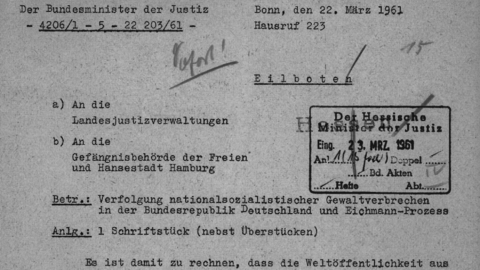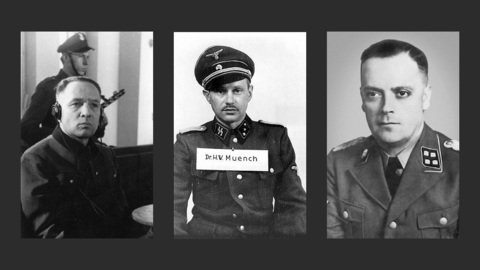Prior to the erection of Auschwitz I in May 1940 and until the liberation of the last Auschwitz prisoners in January 1945, about 8,200 members of the SS served in the garrison at Auschwitz and its ancillary camps. Of the approximately 6,500 survivors of this group of persons, only about 800 ever had to account for their involvement in the mass murder in court.
About 650 members of the SS had to answer to the Polish courts, including the first camp commandant of Auschwitz I, namely SS Lieutenant Colonel (Oberbannsturmführer) Rudolf Hoess. Hoess had already confessed to the mass murder through gassing during the Nuremberg Trial in 1946. In British captivity, he made a comprehensive confession. After Hoess was extradited to Poland, a Polish court sentenced him to death by hanging as a war criminal in March 1947. On April 16, 1947, he was executed at the site of his crimes, namely at Auschwitz. Another court in Poland rendered judgements against 40 former members of the SS garrison during the so-called Cracow Auschwitz Trial in December 1947. For their involvement in the genocide, twenty defendants, including the former highest-ranking officer Arthur Liebehenschel, who had been the camp commandant at Auschwitz I between November 1943 and May 1944, were sentenced to death and executed.

